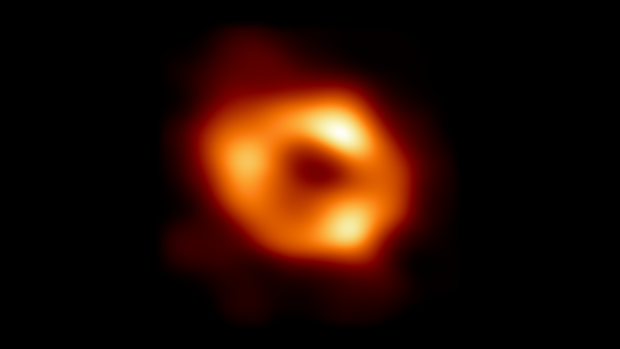Historic image shows photographic evidence of black hole at center of Milky Way galaxy
CHICAGO (CBS/AP) -- Astronomers on Thursday unveiled the first photographic evidence of a supermassive black hole at the center of the Milky Way.
The image was produced by the Event Horizon Telescope Collaboration, using a network of radio telescopes around the world – including the University of Chicago-affiliated South Pole telescope, the U of C said.
The black hole – known as Sagittarius A* - is at the very center of the galaxy, and is dark such that you can't see it. But the ring of light is a telltale sign.
CBS 2's Jim Williams talked about the black hole discovery with John E. Carlstrom, the Subramanyan Chandrasekhar Distinguished Service Professor in the U of C's Departments of Astronomy and Astrophysics and Physics, who directs the South Pole Telescope team
"I think it's just terrific. It's a major accomplishment. It's an accomplishment that's been over 50 years in the making," Carlstrom said.
The discovery can also yield some clues about the universe, Carlstrom explained.
"Black holes, we find, are at the center of every major – all the galaxies have a black hole. The evidence points to that. But they're very hard to actually look in and learn about," Carlstrom said, "and here we have one in our own backyard – in our own galaxy – and we're able to zoom in and really look."
Williams asked Carlstrom to explain, in layman's terms, how a black hole shapes our universe.
"I would say our universe shapes the black holes," Carlstrom said. "They're part of what evolves in our universe – we don't quite understand it. They're part of what anchors galaxies, and of course, galaxies and the stars in them are what gives rise to us, and life. So they're a part of the picture."
Getting a good image of Sagittarius A* was a challenge; previous efforts found the black hole too jumpy.
"It burbled and gurgled as we looked at it," the University of Arizona's Feryal Ozel said.
The black hole is about 27,000 light-years away from the earth, and appears to have the same size in the sky as a donut on the moon, the U of C said.
But the actual size of the black hole is 4 million times larger than the sun.
Ozel described it as a "gentle giant" while announcing the breakthrough along with other astronomers involved in the project. The picture also confirms Albert Einstein's general theory of relativity: The black hole is precisely the size that Einstein's equations dictate. It is about the size of the orbit of Mercury around our sun.
Black holes gobble up galactic material, but Ozel said this one is "eating very little." It's the equivalent to a person eating a single grain of rice over millions of years, another astronomer said.
Scientists had expected the Milky Way's black hole to be more violent, especially since the only other image from another galaxy shows a far bigger and more active black hole.
"It is the cowardly lion of black holes," said project scientist Geoffrey C. Bower of Taiwan's Academia Sinica Institute of Astronomy and Astrophysics.
Because the black hole "is on a starvation diet" so little material is falling into the center, and that allows astronomers to gaze deeper, Bower said.
The full results of the black hole study can be found in a special issue of The Astrophysical Journal of Letters, published Thursday.





